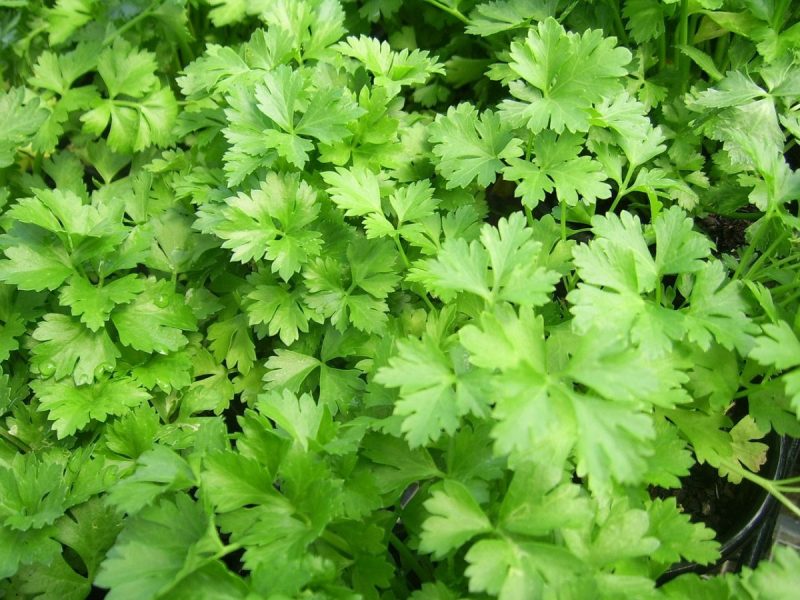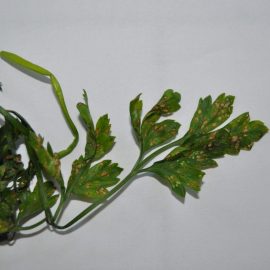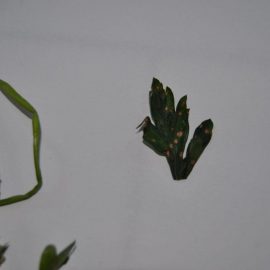Parsley – planting, growing and harvesting

Parsley (Petroselinum crispum) is originally from the Mediterranean basin, being a biennial plant of the Umbelliferae family, much appreciated for its characteristic aroma and rich content in essential oils, vitamins, and minerals, etc. In the past, before being used in gastronomy, parsley was used as a medicinal plant. Today, it is cultivated worldwide as an aromatic and medicinal plant, having an important role in the kitchen.
Use
It is used both fresh and dehydrated, for flavouring food. After drying and harvesting, the seeds can also be used.
For medicinal purposes, parsley is used against diseases of the kidneys, liver, etc.
Botanical characteristics
Parsley is a biennial plant, in the first year developing a rosette of leaves and in the second year the flower stem appears and the seeds are formed. The leaf parsley has a more branched root than the parsley kind grown for its root, unimportant in the diet, and has a rich rosette of leaves. The leaves can be smooth or corrugated, depending on the variety. The compound umbel inflorescence develops in the second year, followed by the formation of seeds.



Environmental requirements
Temperature requirements are low, seeds germinate when outside there are only a few degrees and mature plants can overwinter in the field. It is a light-loving species, preferring sunny places to develop a rich rosette. Water is an important factor, especially during sunrise and when the plants are still small. In order to obtain good crops, the culture should be set up in loamy-sandy soils, rich in humus, permeable, with a slightly acidic to neutral pH. Unlike the parsley grown for its root, the parsley grown for its leaves tolerates and prefers the administration of organic fertilizers in the year of cultivation.
Cultivation
Crop establishment is done through direct sowing in the field, in early spring or autumn. The soil must be well tilled at the time of sowing to ensure good contact between the small seeds and the soil, and uniform germination. For this same purpose, after sowing, the land should be rolled. The soil must also be well supplied with water. The seedlings sprout quite slowly, the seeds needing about 25 days to germinate. At the time of emergence, the soil should not form a crust because it prevents the seedlings from sprouting. The sowing distances can be 25-30 cm between rows and 5-6 cm between plants, per row, and the depth 1.5 cm.
For placing on windowsills and terraces, parsley can be successfully grown in pots and the variety with corrugated leaves also has a decorative purpose, in addition to its flavor.
Recommended products
-
You can find products on a different store
Change Store -
You can find products on a different store
Change Store -
You can find products on a different store
Change Store -
You can find products on a different store
Change Store -
You can find products on a different store
Change Store -
You can find products on a different store
Change Store -
You can find products on a different store
Change Store -
You can find products on a different store
Change Store -
You can find products on a different store
Change Store -
You can find products on a different store
Change Store -
You can find products on a different store
Change Store -
You can find products on a different store
Change Store -
You can find products on a different store
Change Store -
You can find products on a different store
Change Store -
You can find products on a different store
Change Store -
You can find products on a different store
Change Store -
You can find products on a different store
Change Store -
You can find products on a different store
Change Store -
You can find products on a different store
Change Store -
You can find products on a different store
Change Store -
You can find products on a different store
Change Store -
You can find products on a different store
Change Store -
You can find products on a different store
Change Store -
You can find products on a different store
Change Store
Care
One of the most important care works is controlling weeds through mechanical weeding or with pre-emergent herbicides. This is important especially for the post-emergence phase. Water management is essential for a rich harvest of leaves, administered during the growing season in stages.
Periodically, the crop can be fertilized in stages with granular or foliar fertilizers, depending on the needs of the plants. After each harvest, the plants must be irrigated and fertilized with a balanced fertilizer, in order to favor the restoration of the rosette of leaves.
Recommended products
-
You can find products on a different store
Change Store -
You can find products on a different store
Change Store -
You can find products on a different store
Change Store -
You can find products on a different store
Change Store -
You can find products on a different store
Change Store -
You can find products on a different store
Change Store -
You can find products on a different store
Change Store -
You can find products on a different store
Change Store -
You can find products on a different store
Change Store -
You can find products on a different store
Change Store -
You can find products on a different store
Change Store -
You can find products on a different store
Change Store -
You can find products on a different store
Change Store -
You can find products on a different store
Change Store -
You can find products on a different store
Change Store -
You can find products on a different store
Change Store -
You can find products on a different store
Change Store -
You can find products on a different store
Change Store -
You can find products on a different store
Change Store -
You can find products on a different store
Change Store -
You can find products on a different store
Change Store -
You can find products on a different store
Change Store -
You can find products on a different store
Change Store -
You can find products on a different store
Change Store
Harvesting and storage
The leaves are harvested several times a year, depending on when the crop is established and the conditions offered to the plants. Leaves are cut 3-4 cm from the base of the shoot, taking care not to destroy the central bud of the plant. Harvesting can be done manually or mechanically.
For off-season consumption, dried leaves and seeds can be used. Also, a pot with a few plants can ensure the consumption of fresh leaves during the winter.
Diseases and pests
Among the diseases specific to umbelliferous plants, powdery mildew and septoria are the most common. Symptoms appear on the leaves as white spots on plants attacked by powdery mildew and as spots with a light-colored center in the case of septoria.
Aphids are the most common pests and attack the young leaves.
Recommended products
-
You can find products on a different store
Change Store -
You can find products on a different store
Change Store -
You can find products on a different store
Change Store -
You can find products on a different store
Change Store -
You can find products on a different store
Change Store -
You can find products on a different store
Change Store -
You can find products on a different store
Change Store -
You can find products on a different store
Change Store -
You can find products on a different store
Change Store -
You can find products on a different store
Change Store -
You can find products on a different store
Change Store -
You can find products on a different store
Change Store -
You can find products on a different store
Change Store -
You can find products on a different store
Change Store -
You can find products on a different store
Change Store -
You can find products on a different store
Change Store -
You can find products on a different store
Change Store -
You can find products on a different store
Change Store -
You can find products on a different store
Change Store -
You can find products on a different store
Change Store -
You can find products on a different store
Change Store -
You can find products on a different store
Change Store -
You can find products on a different store
Change Store -
You can find products on a different store
Change Store

















































































































































































































































































































































































































































